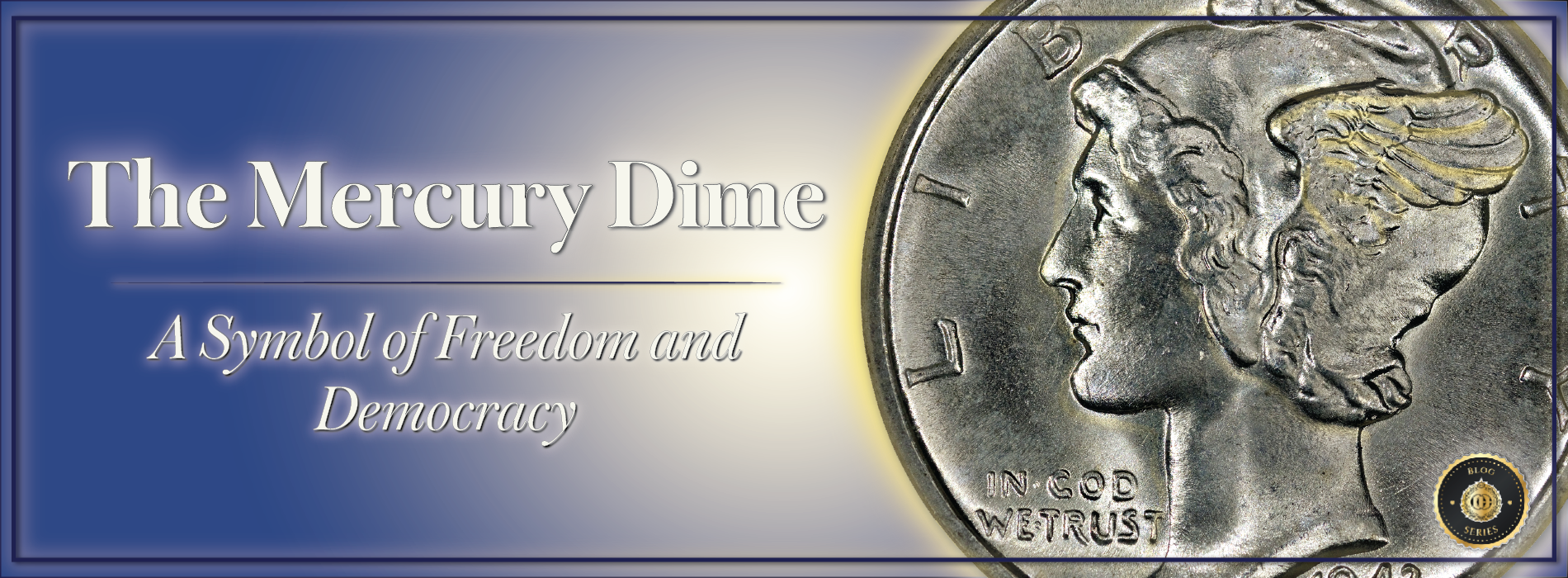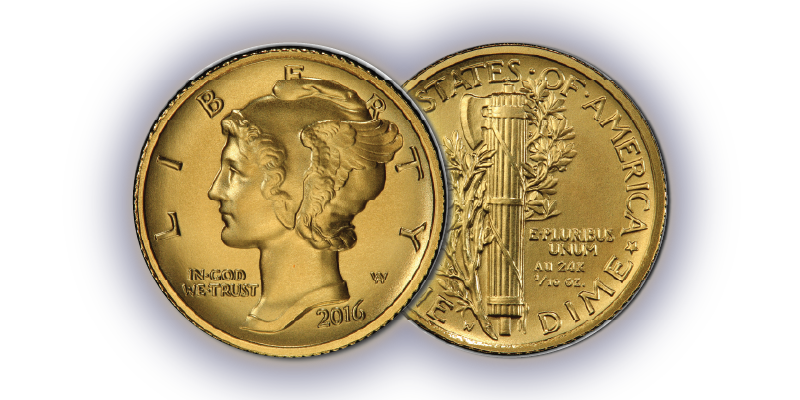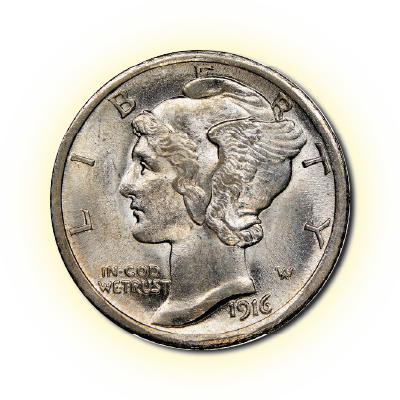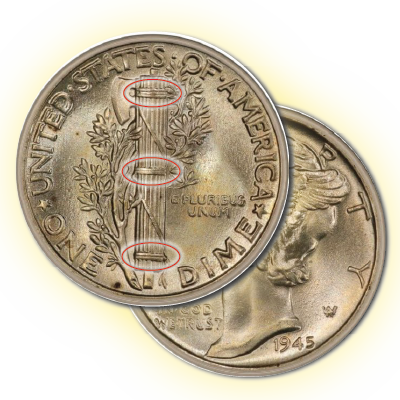
Few coins capture the spirit of America between two world wars like the Mercury Dime. Minted from 1916 to 1945, this silver ten-cent piece was born during the Progressive Era, circulated through the Great Depression, and jingled in the pockets of soldiers during World War II. Its timeless design — Liberty crowned with wings — became an enduring symbol of freedom, democracy, and resilience. For seasoned collectors, the Mercury Dime evokes pride in a nation that endured its hardest years. For newcomers, it is one of the most affordable and accessible silver coins to begin a collection.
The Story Behind the Mercury Dime
In 1916, America was hungry for change. The old Barber dime had been in use for 25 years, and both the public and collectors wanted something new — something that reflected a modern vision of liberty.
The task of redesign fell to Adolph A. Weinman, a German-born sculptor known for his artistry. Weinman depicted Lady Liberty wearing a Phrygian cap, the ancient symbol of freedom, adorned with wings to represent freedom of thought. Though the public quickly nicknamed it the “Mercury Dime” because of its resemblance to the Roman god Mercury, it was in truth a distinctly American design.
On the reverse, Weinman paired a fasces — an ancient symbol of unity and strength — with an olive branch of peace. In a time of global conflict and national uncertainty, the design was both bold and reassuring: America strong, yet dedicated to justice.
The Tumultuous Birth of the Mercury Dime
As elegant as the design was, its arrival in 1916 was anything but smooth. With no Barber dimes struck earlier that year, demand for coinage was sky-high. Mint Director Robert W. Woolley praised the new dime’s beauty but quickly discovered practical problems.
The first working dies showed lettering that wasn’t sharp enough for mass production, forcing the Mint to pause work just as the country’s need for small change was growing desperate. In the meantime, Barber dimes were pressed back into service by the millions.
By late summer, the first Mercury Dimes finally rolled off the presses — but trouble came again. AT&T complained the coins wouldn’t fit in their pay phones. American Sales Machines, a company producing counterfeit detectors, claimed they jammed their equipment. The issue wasn’t the thickness, but a striking flaw called a “fin” — rims struck too high.
With President Woodrow Wilson’s reelection campaign underway, Mint officials feared a national embarrassment. Production halted once more, and Weinman was ordered to adjust the design. He lowered the relief, spaced the letters of “LIBERTY” further from the rim, and softened the strike. By October 1916, the revised dime was ready.
The early experimental pieces were melted, though at least one prototype has survived — a ghostly reminder of the dime’s turbulent debut. What began as a rocky rollout soon became one of America’s most beloved coins, proving that even flawed beginnings can yield lasting greatness.
Key Dates and Rarities Collectors Pursue
The Mercury Dime is filled with treasures that excite collectors:
Even common dates from the 1930s and 1940s, when found in brilliant uncirculated silver, glow with history and remain affordable — perfect entry points for new collectors.
Why Collect Mercury Dimes Today?
The Mercury Dime appeals across generations:
- For veterans and patriots, it is a coin of resilience, carried through Depression and war.
- For new collectors, it offers affordability and artistry in a small silver coin.
- For investors, each dime holds nearly a tenth of an ounce of silver, a tangible store of value.
Owning a Mercury Dime is like holding a chapter of America’s story in your hand.
Tips for Building a Collection
- Start with accessible dates from the late 1930s and 1940s to build momentum.
- Seek “Full Bands” coins if your budget allows — they bring both beauty and value.
- Plan for the 1916-D early; its price only climbs with time.
- Hunt for varieties like the 1942/41 overdate for extra depth in your set.
- Preserve carefully — silver tones beautifully, but improper storage can darken or damage coins.
Many collectors enjoy starting with a “short set” of 1941–1945 Mercury Dimes before tackling the earlier rarities, allowing them to enjoy quick wins while planning for long-term goals.
A Modern Tribute: The 2016 Gold Mercury Dime
In 2016, a century after the Mercury Dime’s debut, the U.S. Mint honored Weinman’s masterpiece with a 24-karat gold version. Struck in .9999 fine gold and weighing one-tenth of an ounce, this centennial issue recreated the original design with breathtaking precision.

Collectors snapped them up immediately, eager for a modern connection to a classic. While the original silver dimes were coins of commerce, the gold version was purely commemorative — a tribute that reminded Americans just how beloved the design remains. Today, the 2016 Gold Mercury Dime bridges the gap between the early 20th century and modern collecting, a testament to the design’s lasting power.





